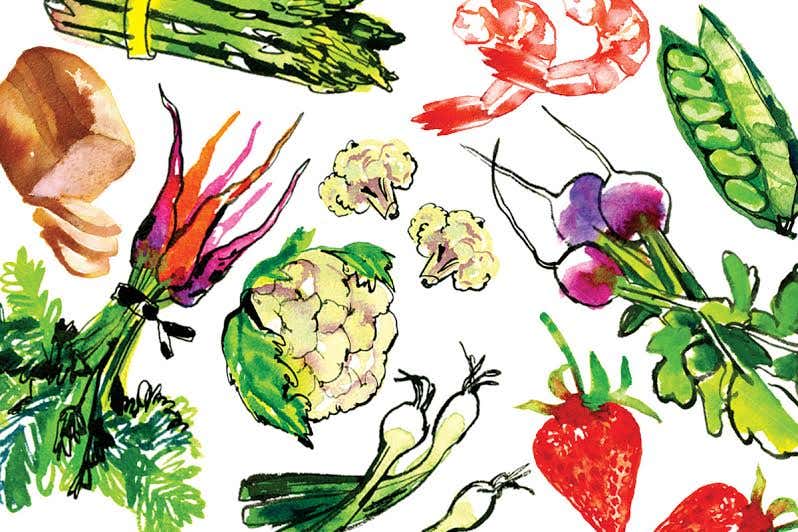
Stocking the Khmer Pantry
THAI EGGPLANTS AND PEA EGGPLANTS
Thai eggplants, about the size of golf balls, are usually eaten young and green. Crunchy and slightly bitter, they are often pickled, added to sauces, or eaten raw with condiments like prahok k'ti (see recipe). Smaller pea eggplants lose their bitterness when cooked and can be tossed into stir-fries or stews or pounded into pastes.
SHRIMP PASTE AND FISH SAUCE
Shrimp paste, made of salted and fermented shrimp, can be used raw, but is often cooked, then added to pastes and stews. Each country in Southeast Asia makes its own fish sauce (Cambodia's is called tuk trey; Thai or Vietnamese fish sauce may be substituted)—a thin brown liquid, strongly aromatic, extracted from salted and fermented fish.
BAMBOO SHOOTS
The first shoots of the bamboo plant, this fibrous vegetable is sliced and added to soups, stews, and stir-fries for crunch and a touch of sweetness. Fresh shoots, which must be boiled (otherwise they are poisonous), are preferable to canned, but they can be hard to find. If using canned bamboo shoots, buy those that are in large unsliced pieces, and rinse well.
GALANGAL
Two rhizomes, or underground stems, in the ginger family appear under this name. Lesser galangal has a pungent aroma with a lemony flavor. Often used in soups, it is sold fresh, frozen, or in jars. More common is galangal itself. It has a pepper and citrus flavor, is best fresh, and, like ginger, is peeled, then thinly sliced or pounded into pastes.
FERMENTED FISH
This indispensable flavoring, called prahok, was originally just a practical means of using the abundance of fish (like gourami and mudfish) in Cambodia's rivers. Some Cambodians chop it up and eat it as a dip, but it is more often used sparingly, sometimes in the form of a less-intense liquid (tuk prahok) made by diluting, cooking, and then straining the prahok.
HOLY BASIL
Many types of basil are grown throughout Southeast Asia. Holy basil, which is sometimes called Asian or Thai basil, is distinguished by its dark green color and purple stems or leaves. With a sharp flavor that hints of anise, it is very different from the sweet basil common in Europe and the U.S. It is most
often used fresh, shredded, then added to soups and dressings.
TAMARIND
A beanlike fruit cultivated in many tropical areas, tamarind adds tartness to soups, dressings, and sauces. (It is one of the principal ingredients in Worcestershire sauce.) It is sold whole (the sticky pulp is inside dry pods) or in blocks. Remove any seeds, dilute a small amount of pulp in water (about one part pulp to three parts water), mash, then press through a fine sieve.
MUSHROOM SOY SAUCE
Smoother than conventional soy sauce, with a rich, almost meaty flavor, mushroom soy is usually extracted from a mixture of fermented soybeans, wheat, sugar, salt, and shiitake or straw mushrooms. Cambodians use it as a seasoning, splashing it into stews and stir-fries or adding it to marinades for meats and poultry—it imparts a slight golden color.
Keep Reading
Continue to Next Story










